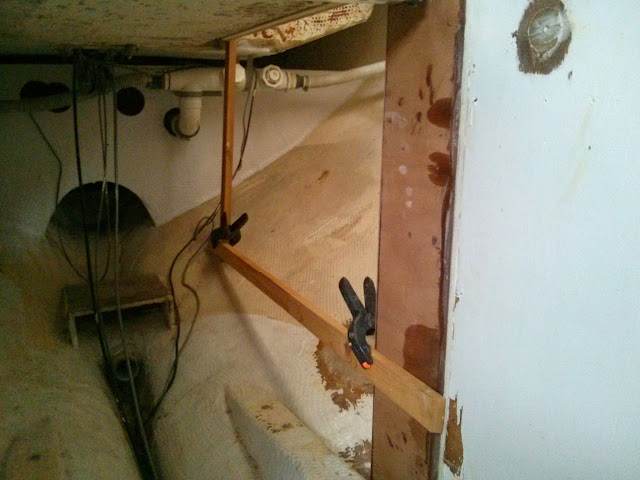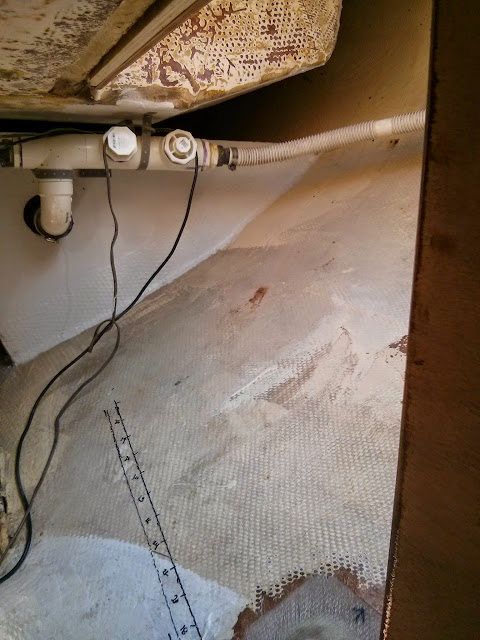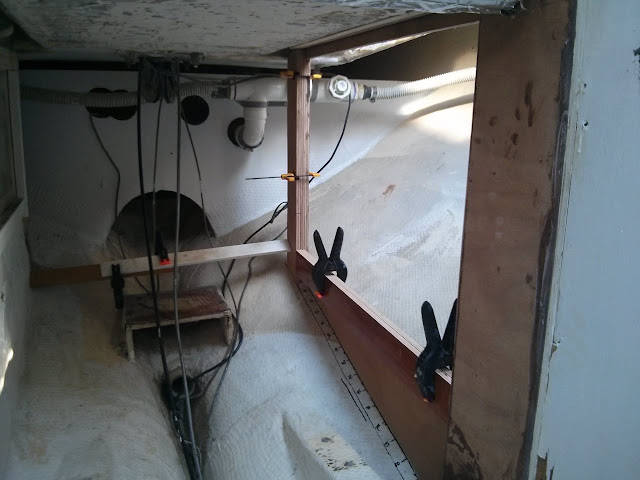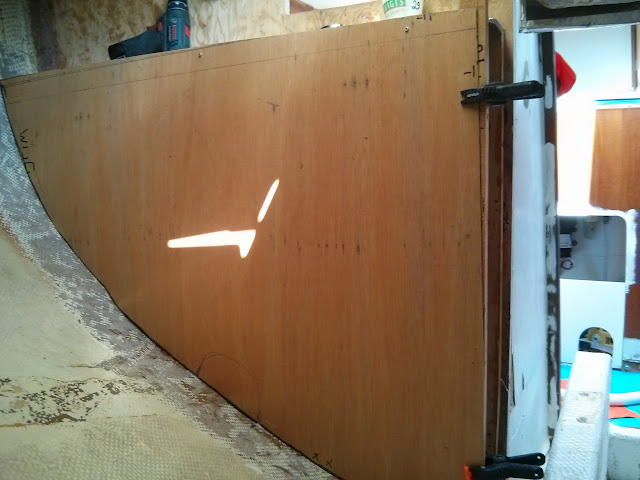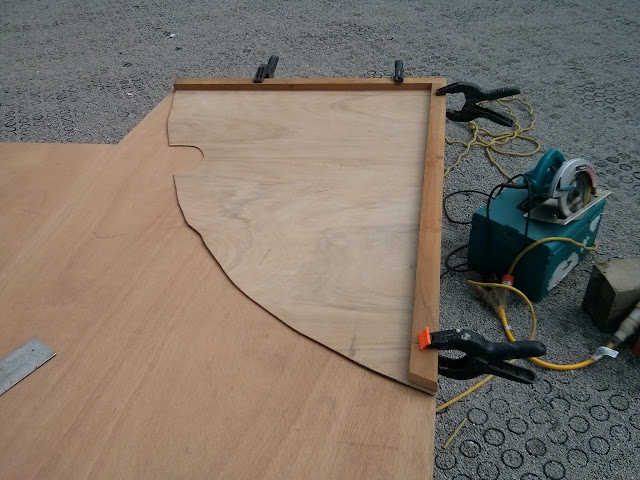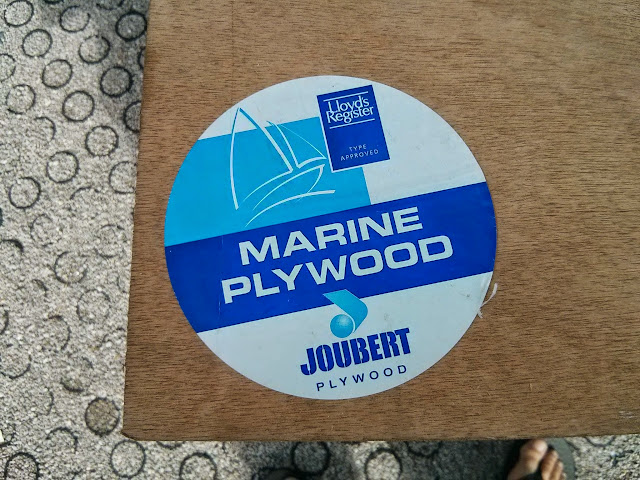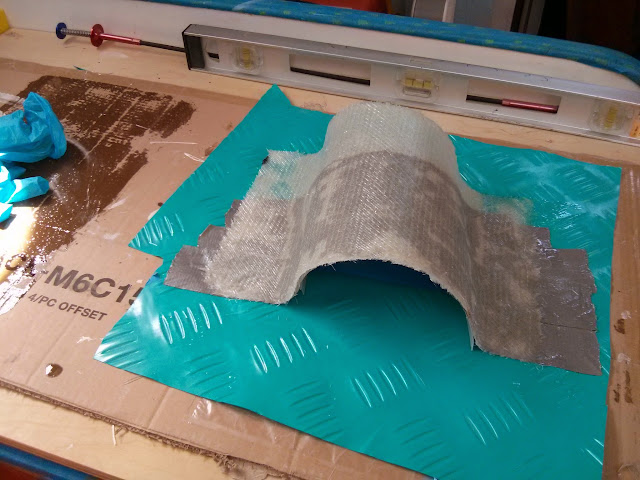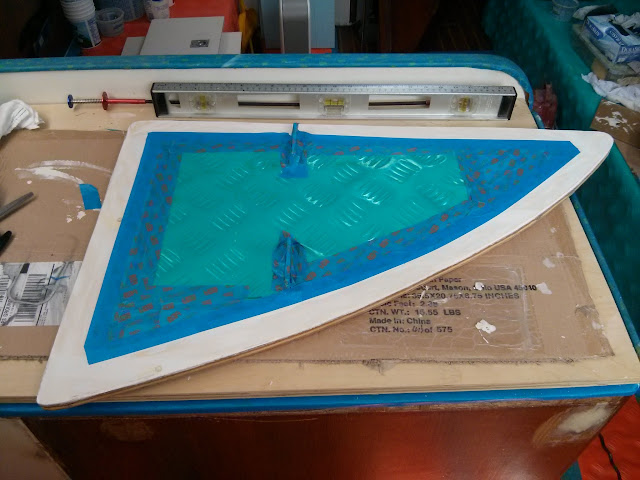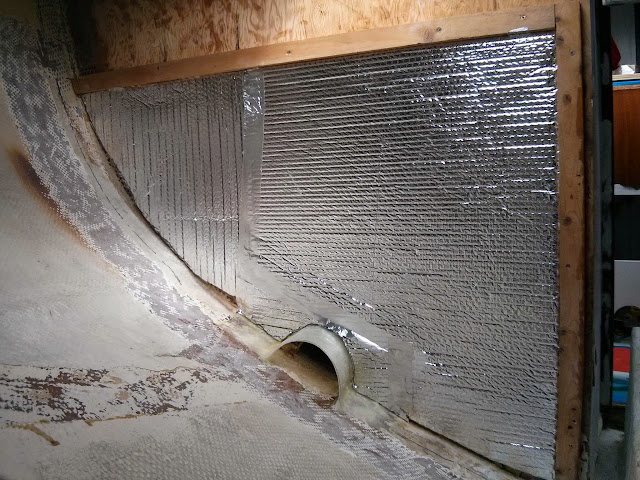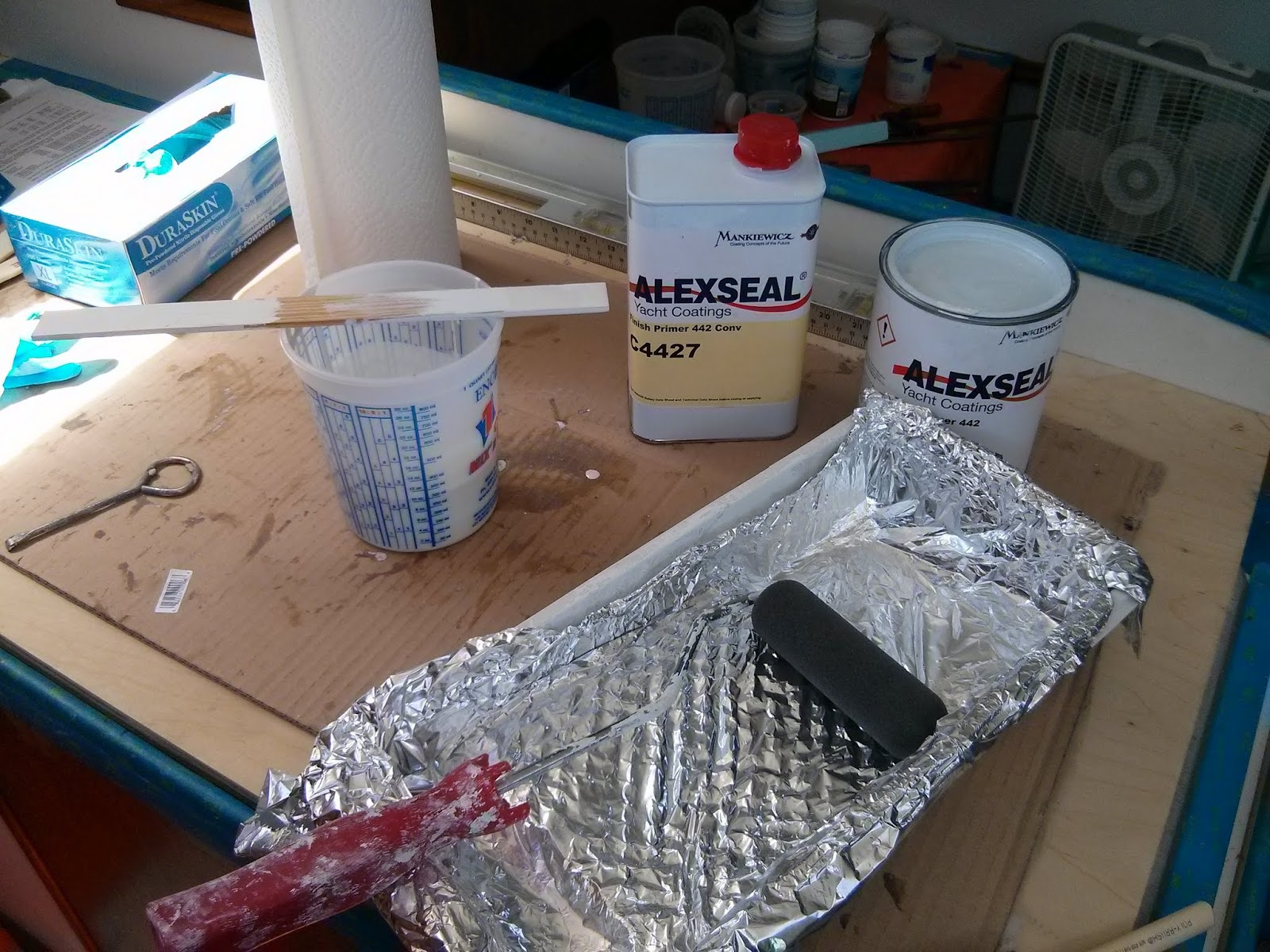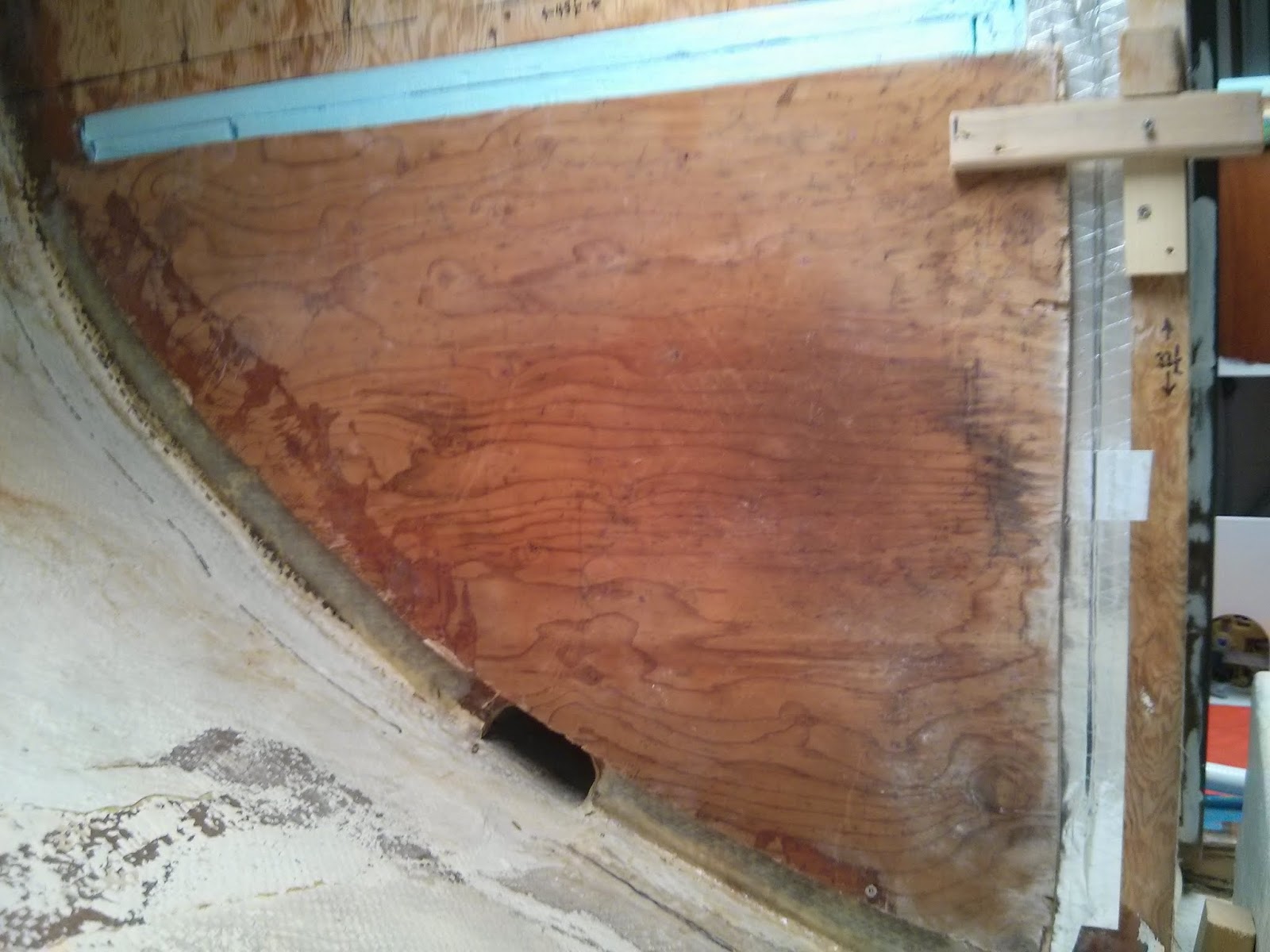We are continuing to fabricate and install new panels and
floor in the cockpit locker. Oh yes we have also done a bit of painting…
 |
| Peering down upon fresh paint in the cockpit locker |
We painted the lower portion of the locker so that we could
install the new floor. Having a
horizontal floor makes working in the tight space much more comfortable.
We created a template for the floor then transferred the
shape to the 1/2” marine plywood used for other panels in the cockpit
locker. After a test fit and few minor
adjustments, we installed an access panel in the central section of the floor.
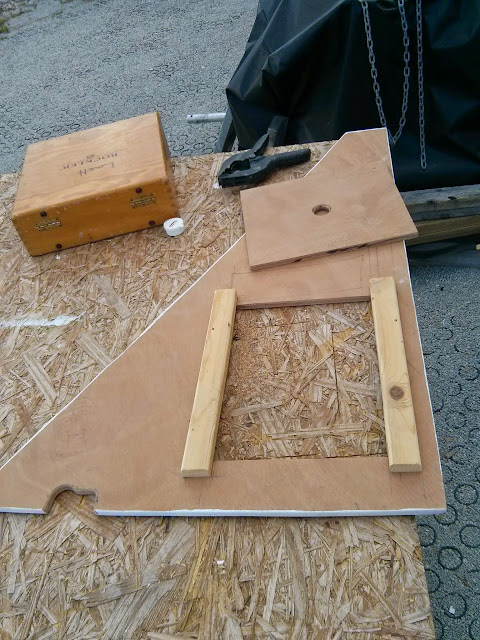 |
| Creating a simple access panel in the cockpit locker floor. |
We sealed the underside of the flooring with a couple coats
of epoxy.
 |
| The underside of the cockpit floor is with two coats of epoxy to prevent water damage. |
And painted the top side.
 |
| The new locker floor viewed from the cockpit. The cut outs at the upper left are for bilge pump drain hoses. |
The ½” marine plywood is nearly exhausted. The remaining cockpit locker panels &
cabinetry are less structural and will be installed higher above the waterline. To complete the locker refit we purchased a
4’ X 8’ sheet of ½” thick pre-finished birch plywood. The pre-finished plywood is a bit more expensive,
but we will save time and materials in the painting stage of the project.
The first of the birch
panels to go in, vertical panel along the upper aft wall, required some
creative clamping.
 |
| Employing creative clamping to hold the aft vertical panel in place while the tabbing cures. |
The cockpit side walls in this area are relatively thin, 3/8”,
solid fiberglass. Using 1708 cloth to
tab in a ½” plywood panel will provide a surface to which we can mechanically fasten
hose clamps, hooks, or any number of locker organizers without the need to put
a hole in the fiberglass wall.
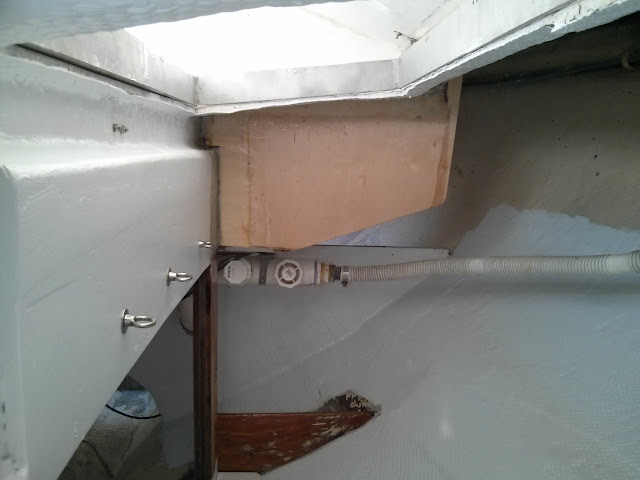 |
| Upper panel and lower brace tabbed in place. Installed stainless steel "ring" nuts on the three thru-bolts along the longitudinal side wall. |
Next step will be to install a shelf along the hull and
replace the tired deck scupper drain hose.
 |
| Adding a shelf, re-plumbing the deck scupper, and painting in the upper portion of the cockpit locker are next up on our to do list. |
More images and notes from this on-going project are
available in the Cockpit
Locker Refit Photo Album

